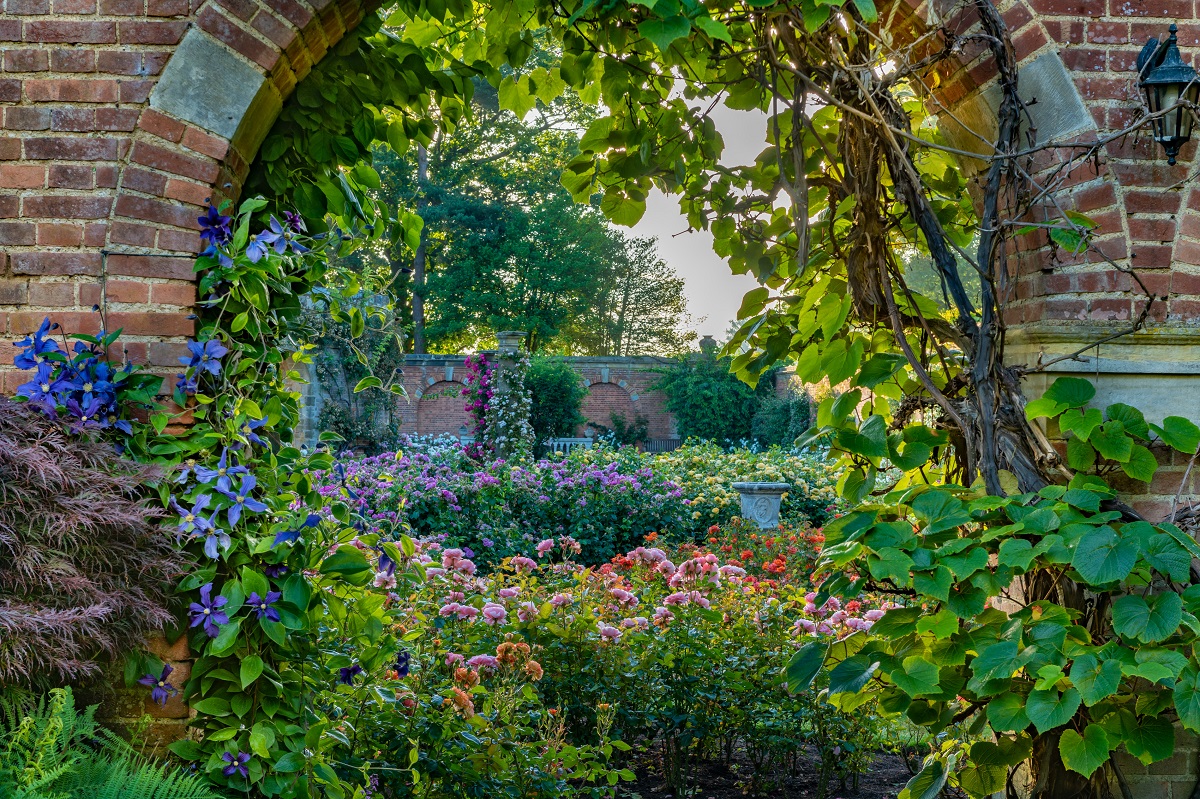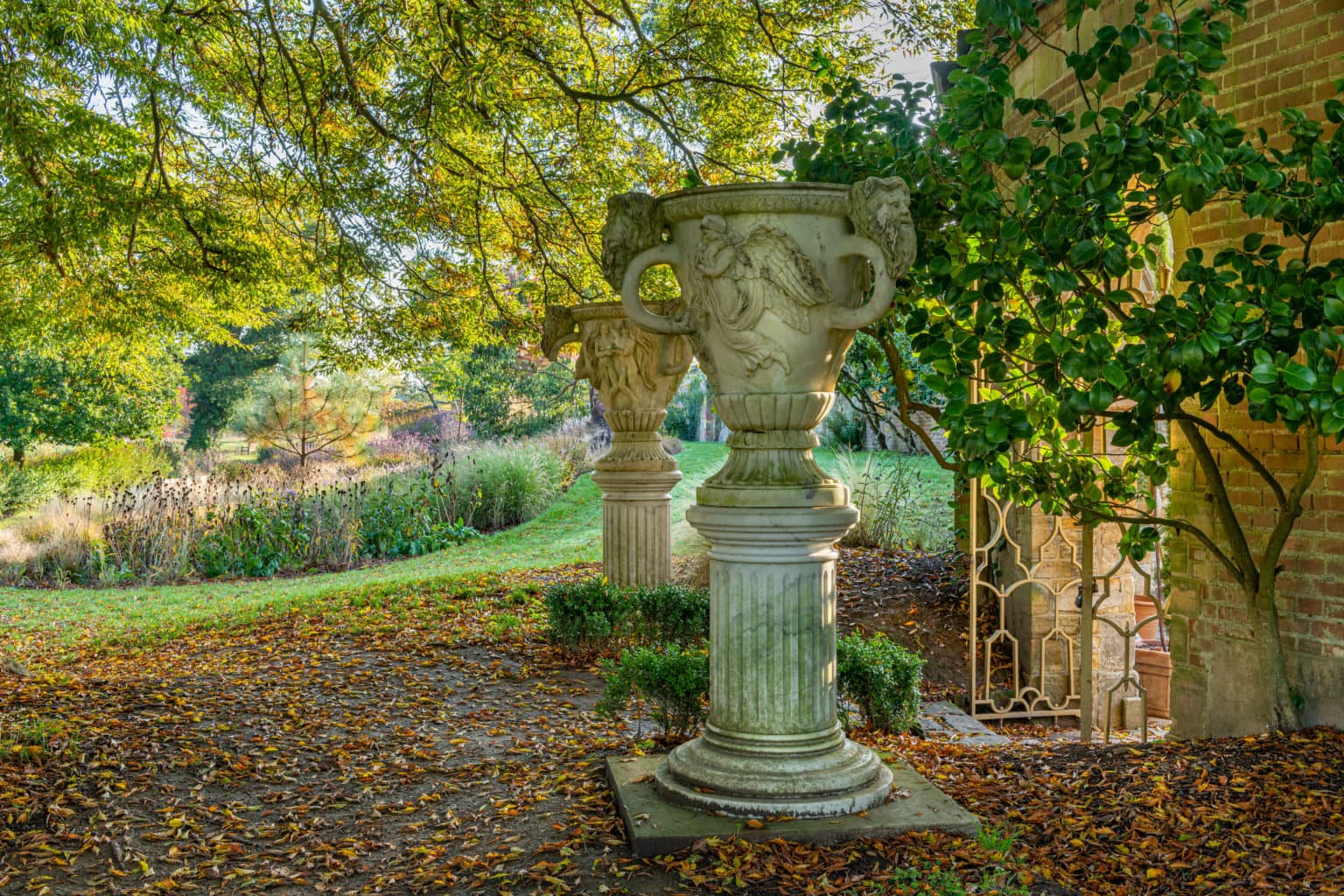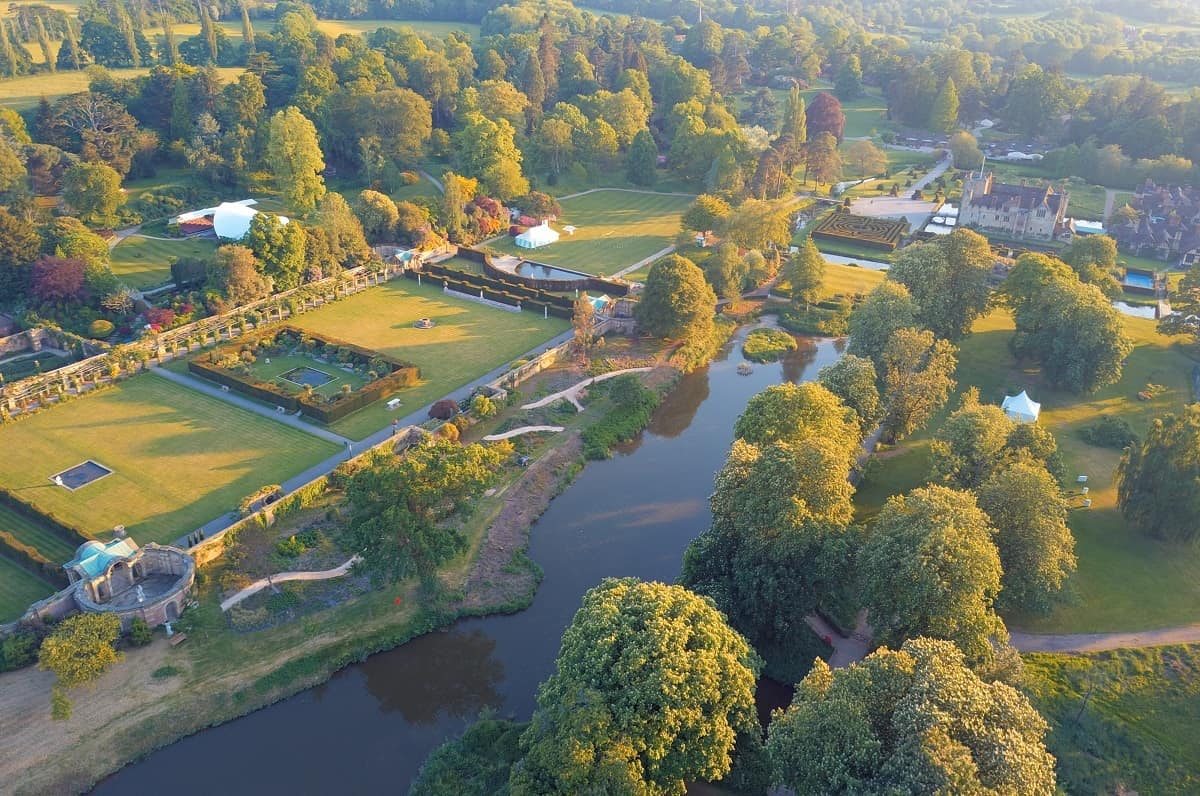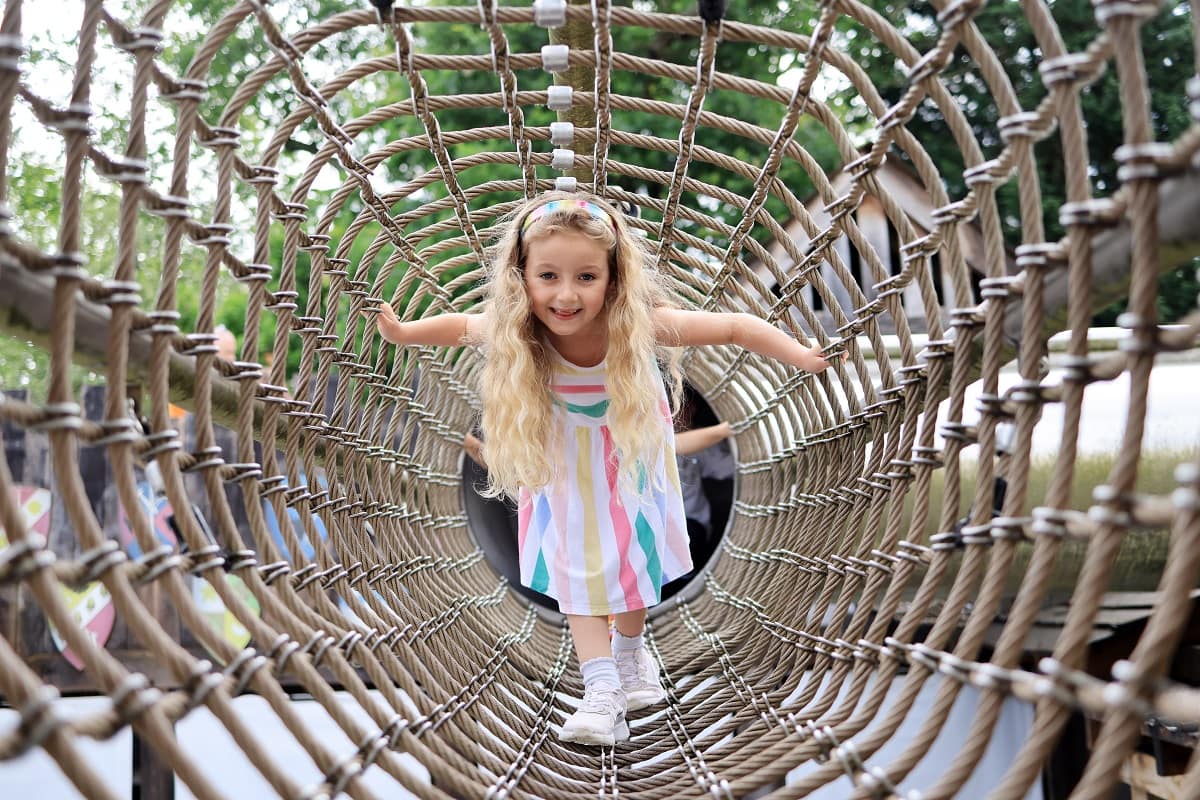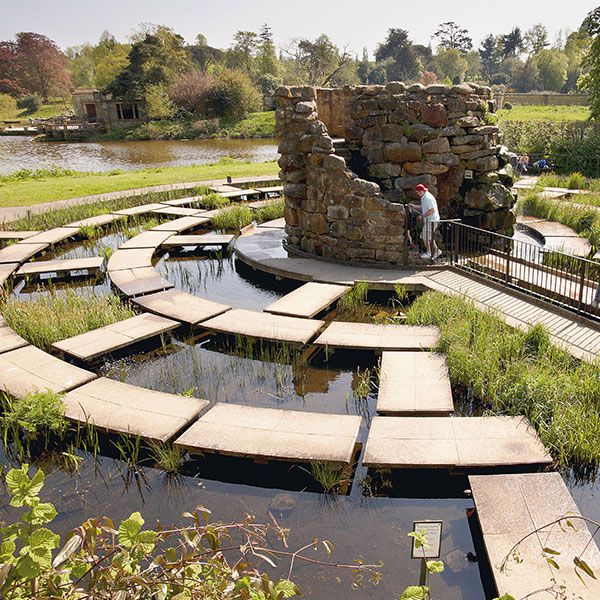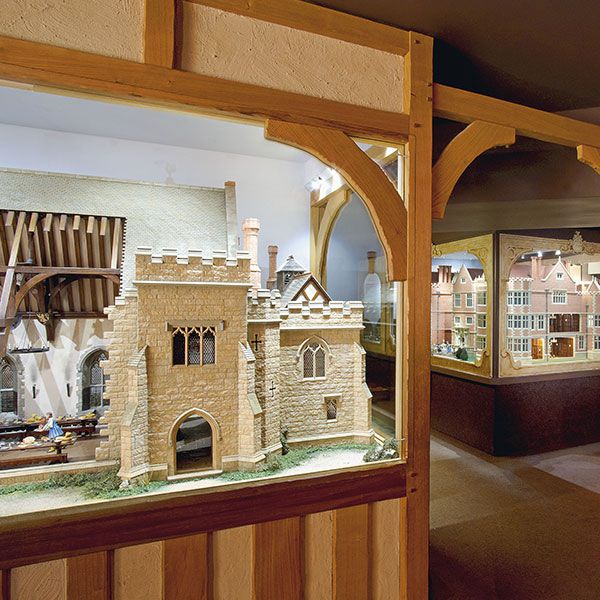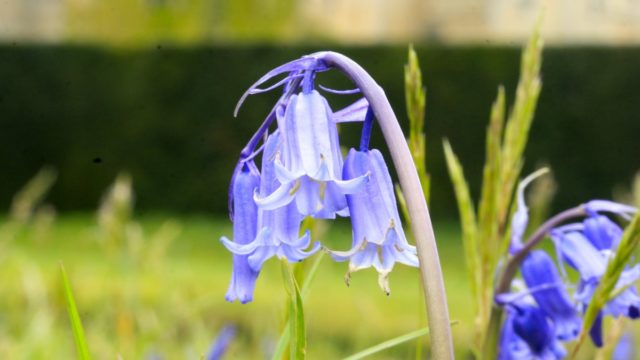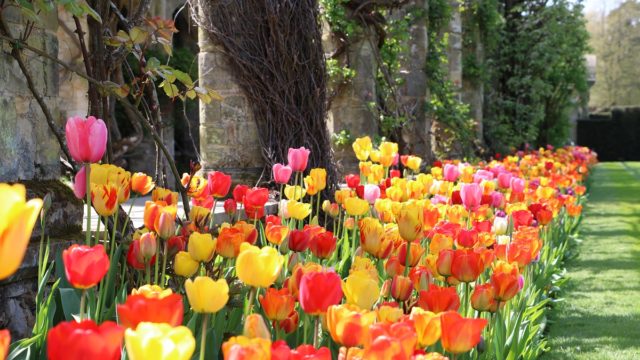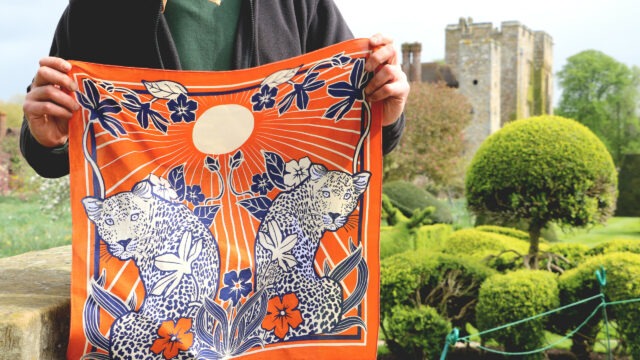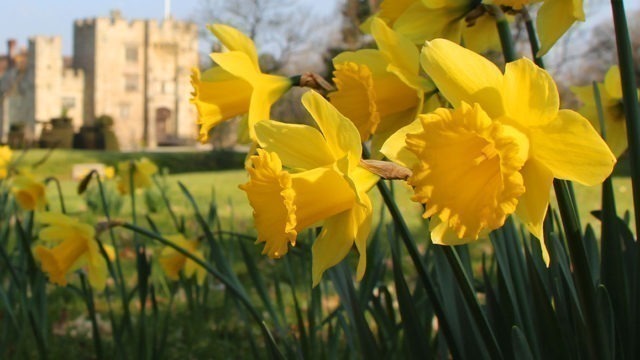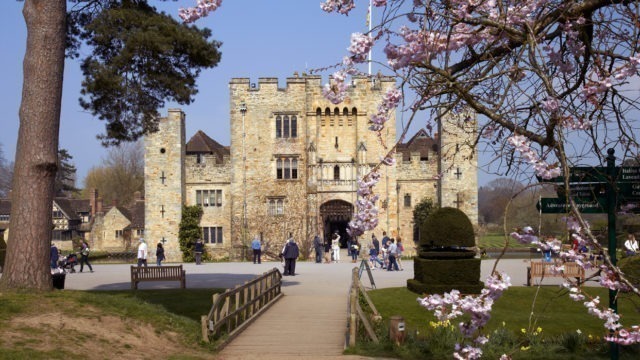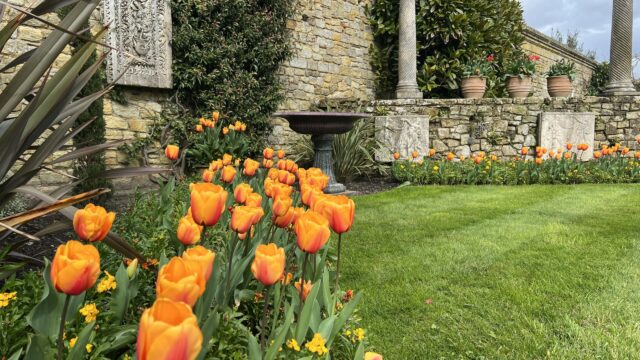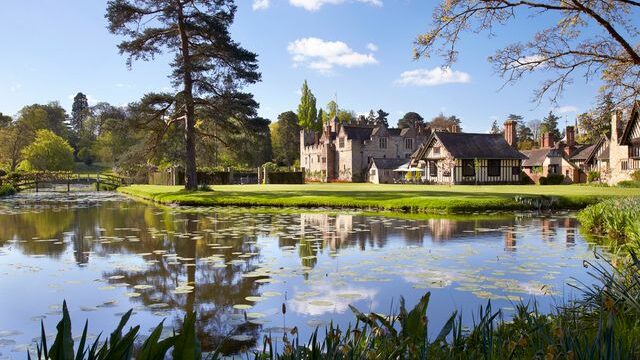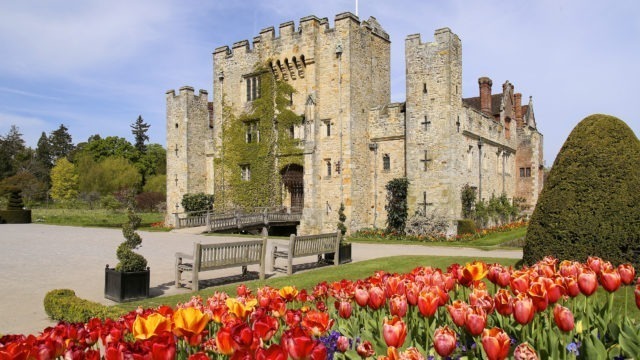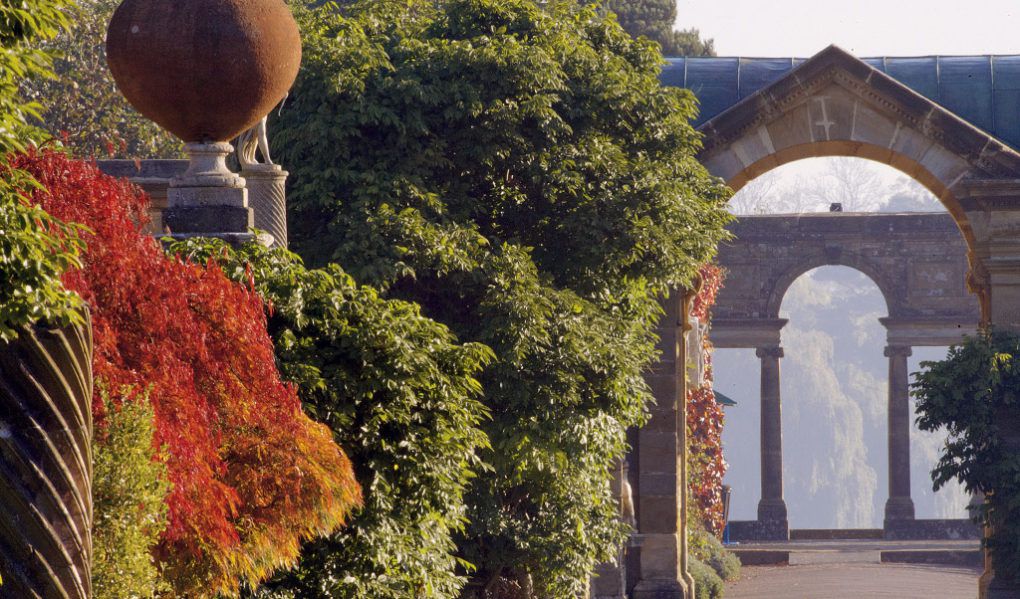
Italian Garden
Covering four acres, the long sweeping lawns and tall clipped yew hedges form the central area of this magnificent garden, bordered by two twelve foot high walls made from local stone. On the north side is the Pompeiian Wall which contains small bays showcasing antiquities in stone and marble enveloped with shrubs and climbing plants. Along the south side runs the Pergola Walk with its shaded grottoes planted with ferns and moisture loving plants. Hidden in its centre behind a tall hedge lies the Sunken Garden, an oasis of peace and quiet. The impressive Loggia at the lake end of the garden is flanked by pillared colonnades and descends by balustrade steps to the piazza below with its classical sculpture inspired by the Trevi Fountain in Rome.
Rose Garden
The romantic quintessential English rose garden is the setting for over 5,000 roses which flourish from June until the end of September. Planted in blocks of colour from palest pink to deep crimson and rich purple, varieties range from the Alba and Bourbon to Hybrid Tea and Floribunda. White Iceberg is a permanent variety complementing the inner beds and pillar-trained climbers, which fill the air with their fragrant scent throughout the summer months.
The Rose Garden was featured on BBC2 Gardeners’ World in 2013. Among the garden’s many admirers is Dame Judi Dench, who launched Hever Castle’s very own floribunda rose (Horquinsey) in 2011.
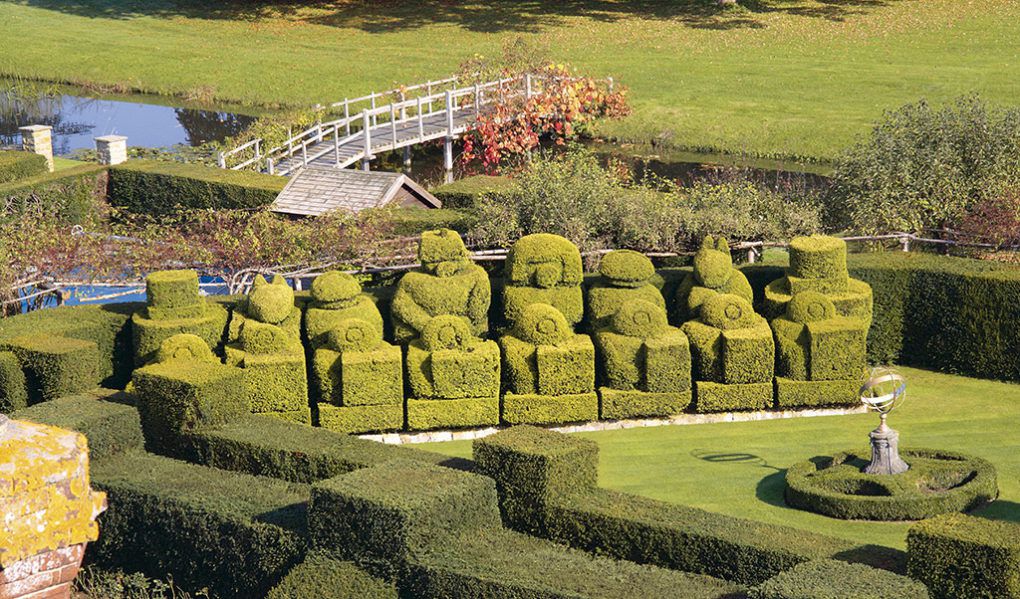
Tudor Garden
Alongside the Yew Maze lies the Tudor Garden, a series of small, sheltered gardens with neatly clipped hedges. These simple gardens were laid out as they might have been in the time of Henry VIII and Anne Boleyn. One is planted in the style of a Tudor Herb Garden with a variety of English herbs. The paved Fountain Garden contains a profusion of Ballerina shrub roses around a tiled fountain making it the perfect place to sit and relax. In the adjoining Chess Garden, with its chess pieces cut from golden yew, stands an astrolabe dating from the reign of Queen Anne. All three gardens border the outer moat which contains colourful water-lilies which flower in July and August.
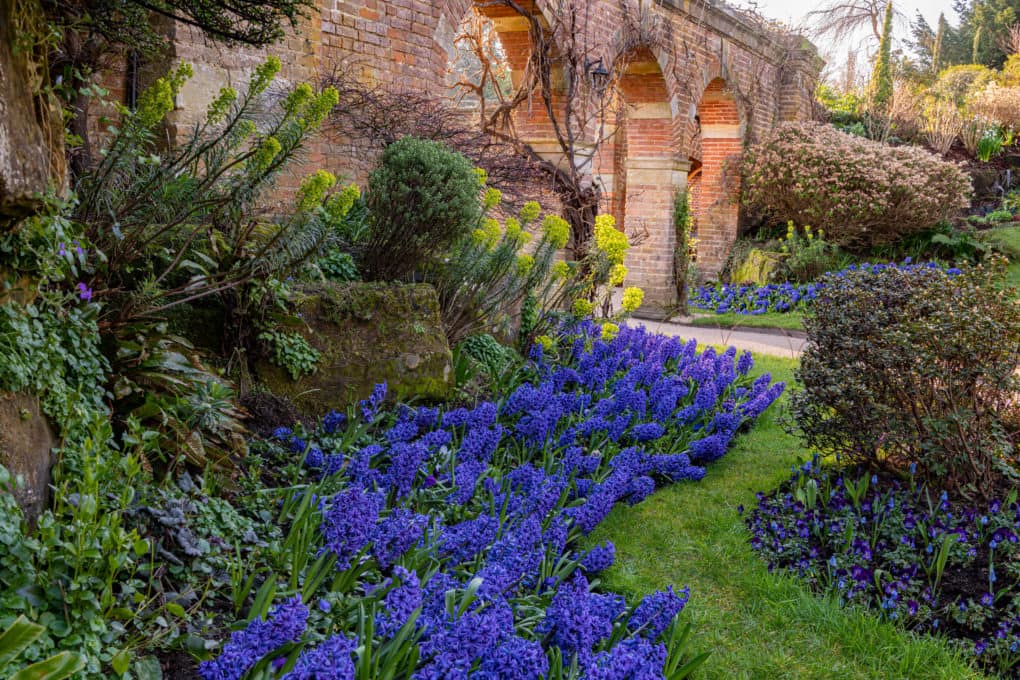
Blue Corner
Whatever the season, the predominant colour in this charming rockery garden behind the Rose Garden is blue. The plants are concentrated around huge rocks and steps leading to Sisters’ Pool Lawn and include blue hydrangeas, ceanothus and blue seasonal perennials. In spring there are numerous blue bulbs in flower such as scilla, grape hyacinth and the ‘King of the Blues’ hyacinth with its intoxicating scent. Annuals and biennials include heliotrope, ageratum and of course forget-me-not.
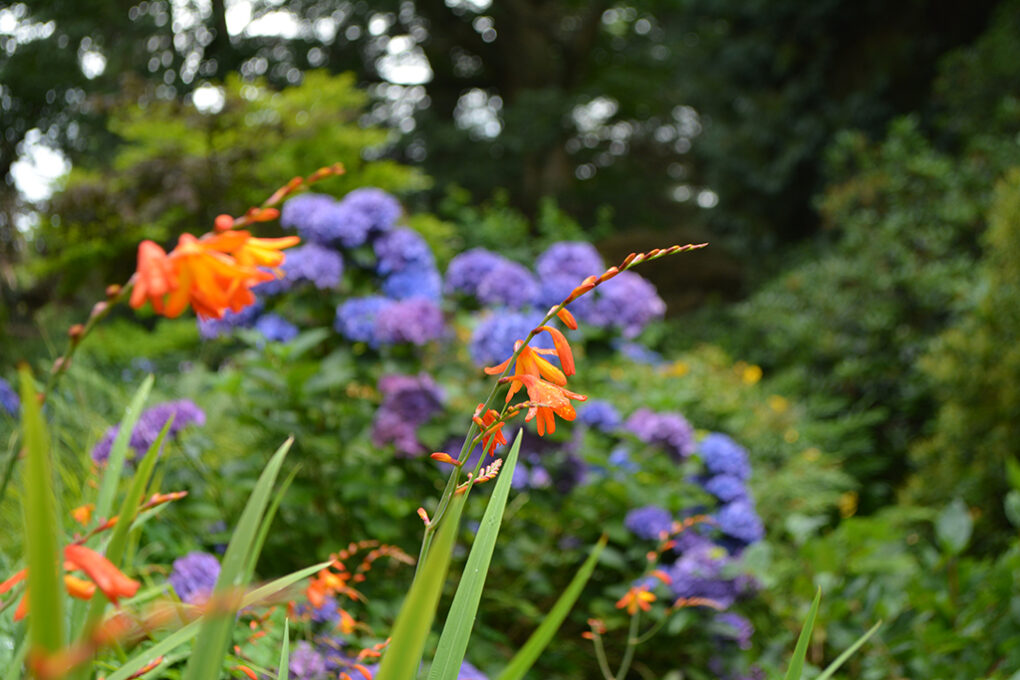
Sunday Walk and Church Gill Walk
Sunday Walk and the rediscovered Church Gill Walk were created by William Waldorf Astor in a very different style to the formal areas of the Gardens. They follow the meandering stream in a circular walk that leads to Hever Church and would have been the route the family took to church each Sunday.
Starting at the Dog Graves near the Gift Shop, Sunday Walk has long been popular with visitors looking for a peaceful retreat away from the main areas of garden. It is planted with unusual shrubs and ferns, gunnera, mock oranges and candelabra primula, with marginal planting along the stream, all complementing Astor’s original rhododendrons.
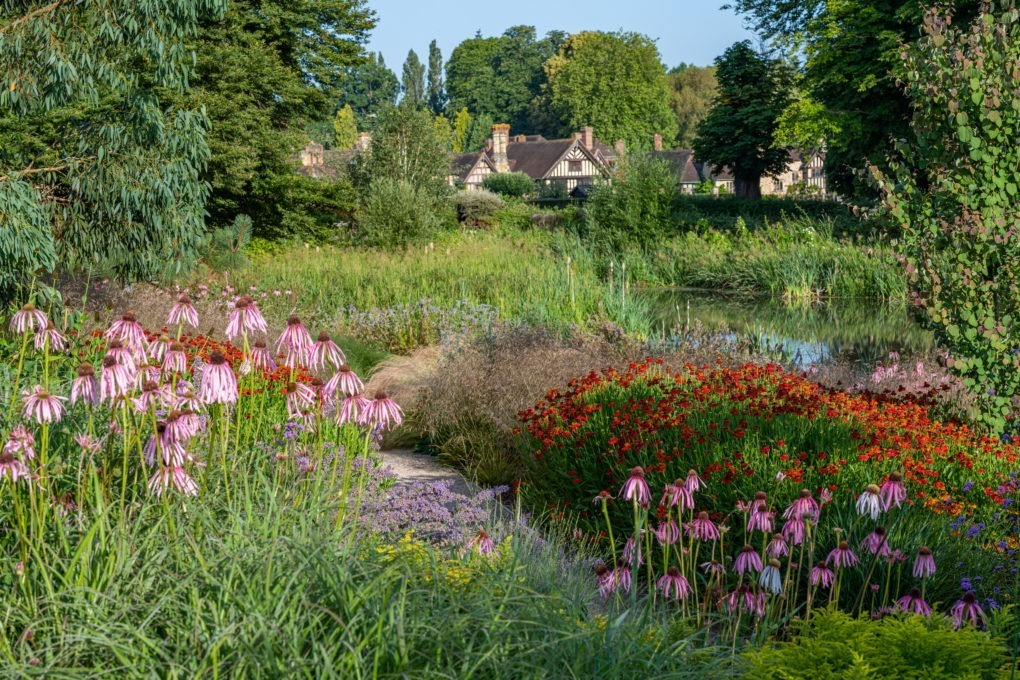
Diana’s Walk and Faith’s Garden
The path here has been known as Diana’s Walk for the last century and was named after the statue of Diana which graced Diana’s Lawn in the Italian Garden until it was sold in the 1980s. The newly planted area of the garden has been named after the Castle’s owner Mrs Guthrie in celebration of her 50th wedding anniversary and to recognise her passion for the gardens at Hever.
Pathways have been cut between the plants so that you can walk among the perennials and grasses to touch them and smell their perfume. As you walk through the perennials, you will see glimpses of sculpture through doorways to the Italian Garden. Grasses, echinacea and agapanthus entice you to reach out and touch them as they trace a looping pathway down towards the Lake and the Loggia.
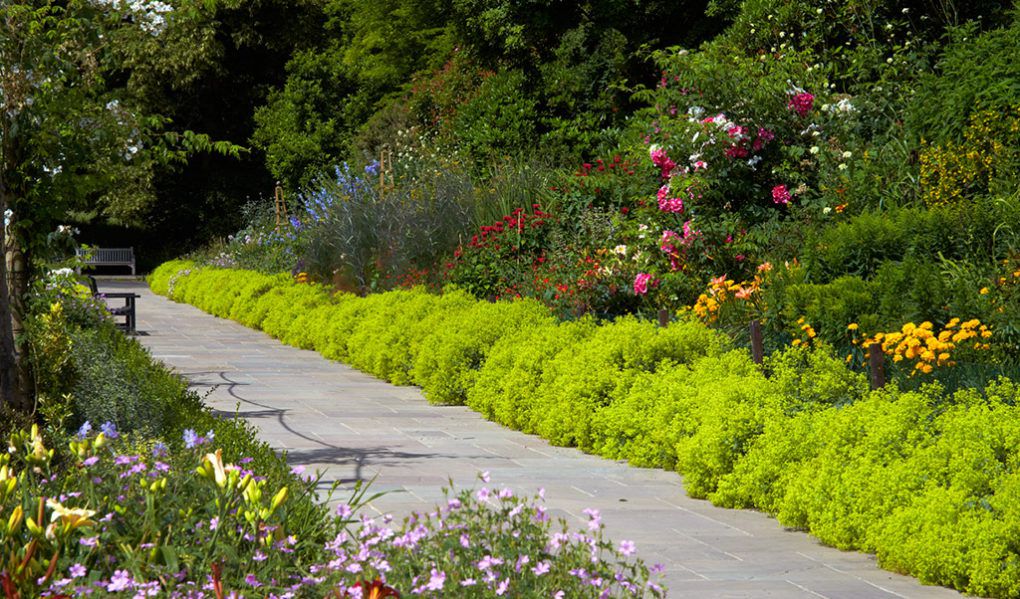
Two Sisters’ Lawn and Pool
This is reached via stone steps leading from the Blue Garden and is the site for the Hever Festival Theatre. The Long Border was designed in Gertrude Jekyll style and displays hundreds of different perennials in a colour scheme that changes from cool to hot and back again. The Rose Bank tucked away behind the theatre marquee is planted with sweetly scented old English roses such as Gallica, Bourbon, Musk and Damask. As summer begins to fade, more than 400 dahlias create their own dazzling display in a colourful border that lasts through to the first frosts. Nearby, Two Sisters’ Pool is bordered by moisture-loving astilbes, hydrangeas and blue iris. A fine group of tree peonies and a tulip tree can be found near the edge of the pool.

